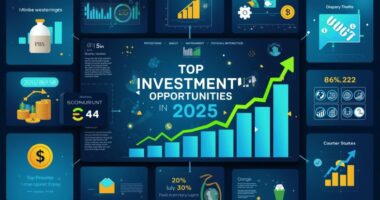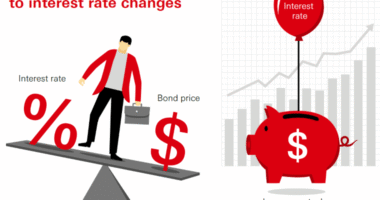A turning point for global finance
The world’s financial landscape is changing rapidly as central banks shift from aggressive tightening to cautious easing. After nearly two years of fighting inflation, policy makers from Washington to Frankfurt to Tokyo are signaling the dawn of a new cycle — one defined by slower growth, easing price pressures, and the search for renewed momentum. Investors everywhere are asking: Is this the start of a new bull market or just a pause before another storm?
Global outlook: slower growth, softer inflation
Economic data through the third quarter of 2025 show that global GDP is likely to expand around 3.2 % this year. The United States, still the world’s anchor, is growing at roughly 1.8 %, while Europe lags near 1 % and Asia — powered by India, Indonesia, and parts of China’s private sector — continues to outperform above 4 %. Inflation, which once topped 9 % in some developed markets, has retreated toward 3 %–3.5 %.
This cooling trend gives central banks the cover to begin cutting rates without reigniting runaway prices. But the transition won’t be smooth: consumers remain cautious, real wages are barely keeping pace, and corporate investment still suffers from uncertainty around trade policy, supply chains, and energy markets.
Why rate cuts matter more than ever
When central banks lower policy rates, they reduce the cost of capital for businesses and households. That, in turn, encourages spending, borrowing, and investment — the oxygen for risk assets like stocks, bonds, and real estate. Yet in late 2025, rate cuts carry a more complex message: they may also signal that growth momentum is weaker than policymakers admit.
Historically, early-cycle rate cuts have boosted equity markets by 10–20 % over the following 12 months, particularly when inflation is falling. But when cuts occur amid stagnation, the gains often fade quickly. Investors must therefore read the context: liquidity can lift prices, but fundamentals sustain them.
The equity landscape: quality leads, speculation fades
Equities remain the heartbeat of every diversified portfolio. Yet the composition of winners and losers is shifting.
-
Quality growth over speculative hype. Cash flow, profitability, and pricing power define leadership in a late-cycle world. Software, infrastructure, energy technology, and consumer staples outperform when growth moderates.
-
Global diversification. U.S. mega-caps have dominated for years, but valuations are stretched. Rotating part of exposure toward Asia-Pacific or European industrials can balance regional risk.
-
Dividends and buybacks. With bond yields easing, dependable dividend growers once again look attractive. Look for payout ratios under 60 % and strong free-cash-flow coverage.
Long-term investors should avoid chasing momentum and instead focus on earning growth visibility. That means sustainable earnings, not speculative narratives.
Fixed income renaissance
After years of near-zero yields, bonds are regaining relevance. As policy rates drift down from their 2023–24 peaks, total returns on intermediate-term bonds look appealing. A 60/40 portfolio may no longer be outdated if managed dynamically.
-
Core strategy: Hold intermediate Treasurys and investment-grade corporates to capture yield while preserving flexibility.
-
Barbell approach: Combine short-term paper for liquidity and long-term maturities for price appreciation potential.
-
Inflation-linked bonds: Keep a modest allocation to TIPS or global inflation-protected securities as insurance against policy errors.
Bond investors must still monitor credit risk; corporate leverage remains high, and refinancing costs could squeeze lower-rated borrowers if growth disappoints.
Real assets and alternatives
As disinflation advances, commodities and real assets often stabilize. Energy prices have softened due to supply recoveries, yet geopolitical risk — in the Middle East, Ukraine, and parts of Africa — ensures that oil and gas markets remain volatile.
-
Gold and precious metals serve as tail-risk hedges when currency debasement fears rise.
-
Infrastructure funds tied to digital networks, renewable grids, and logistics corridors provide inflation-linked income streams.
-
Selective real estate in logistics, healthcare, or multi-family housing continues to attract institutional capital despite higher borrowing costs.
Avoid over-leveraged property plays or speculative commodity bets without clear catalysts.
The crypto wildcard
Digital assets have re-entered mainstream finance through spot ETFs and regulatory clarity in the U.S. and Europe. Bitcoin’s price above $110 k reflects institutional adoption more than retail mania. Liquidity injections from global rate cuts could push valuations higher, but volatility remains extreme. Investors should cap crypto exposure at 2–5 % of portfolio value, rebalanced quarterly, and store assets securely.
Personal finance implications
Monetary easing affects household finances as directly as markets. Here’s how to adapt:
1. Refinancing opportunities
Mortgage rates, which peaked near 7 %, are expected to slip toward 5 % over the next year. Homeowners with good credit should model break-even periods for refinancing. Similarly, small-business owners can refinance expansion loans at lower fixed rates before credit spreads tighten.
2. Savings strategy
Money-market yields will fall as policy rates drop. Shift part of your cash into laddered certificates of deposit or short-term bond funds to maintain income while preserving liquidity.
3. Retirement planning
Lower rates mean future bond returns will moderate. Diversify into dividend-paying equities and global balanced funds that hedge currency risk. Increase contributions early while yields still provide cushion.
4. Tax-efficient investing
Use municipal bonds, retirement accounts, and tax-loss harvesting to enhance after-tax returns. Fiscal policy uncertainty makes efficient structuring more valuable than chasing nominal gains.
5. Insurance and protection
Economic transitions can produce job volatility. Strengthen your safety net — emergency funds, health and disability coverage — before assuming the next bull cycle will bail you out.
Regional insights: where opportunity lies
United States
U.S. markets remain the global benchmark for liquidity and innovation. The next wave of AI-driven productivity and infrastructure spending will support earnings growth, but valuations are full. Focus on dividend growers, industrial automation, and energy infrastructure over speculative tech.
Europe
Europe’s slower growth and tighter fiscal stance make it a value-oriented play. Look for defensive blue-chips in healthcare, utilities, and consumer goods with reliable cash flow. The euro’s relative weakness benefits exporters.
Asia
Asia remains the long-term growth engine. India’s domestic demand story is intact; Southeast Asia benefits from supply-chain re-routing; and Japan’s corporate reforms continue to unlock shareholder value. Diversified regional ETFs offer efficient exposure.
Emerging markets
Debt sustainability and political stability remain differentiators. Countries with commodity strength and credible central banks — like Brazil, Indonesia, and Chile — offer selective opportunities. Avoid high-deficit nations vulnerable to capital flight if the dollar stays firm.
Risk scenarios for 2026 and beyond
-
Soft landing (base case, 60 %) — Growth slows but stays positive, inflation continues to ease, and gradual rate cuts sustain moderate asset gains.
-
Recession (bear case, 25 %) — Rate cuts fail to prevent contraction; unemployment rises; defensive assets outperform while risk assets correct.
-
Re-inflation (upside risk, 15 %) — Energy or supply shocks rekindle inflation; central banks pause cuts; long bonds and growth equities suffer.
Building portfolios that remain resilient across these outcomes is crucial. Diversification by asset class, region, and duration remains the best defense.
Strategic moves for investors now
-
Rebalance quarterly. Use rallies to trim over-valued sectors and add quality on dips.
-
Stay hedged. Keep modest exposure to commodities, gold, and inflation-protected assets.
-
Lean into productivity themes. AI, automation, and infrastructure digitization continue to drive structural growth.
-
Mind currency exposure. A weakening dollar can boost non-U.S. returns; hedge selectively.
-
Review costs. As expected returns normalize, fee efficiency matters more than ever.
Behavioral edge: patience over prediction
Market turning points test discipline. The temptation to “time the bottom” or chase fast-rising assets is enormous when sentiment shifts. Yet history shows that long-term wealth creation comes from consistency, not prediction. Dollar-cost averaging, rebalancing, and staying invested through volatility outperform tactical trading over cycles.
Looking ahead: the dawn of cautious optimism
The financial world of late 2025 sits between fear and hope — a liminal space where policy shifts, investor psychology, and macro fundamentals collide. The emerging pattern favors neither doom nor euphoria, but selective optimism: believing in innovation and productivity while respecting risk.
For savers and investors alike, the path forward is simple but demanding:
-
Stay diversified.
-
Keep liquidity flexible.
-
Focus on real earnings, not narratives.
-
Plan taxes and cash flow with discipline.
-
Let time, not emotion, drive decisions.
The next bull market may not roar overnight, but it is being built quietly through every disciplined financial decision made today.









